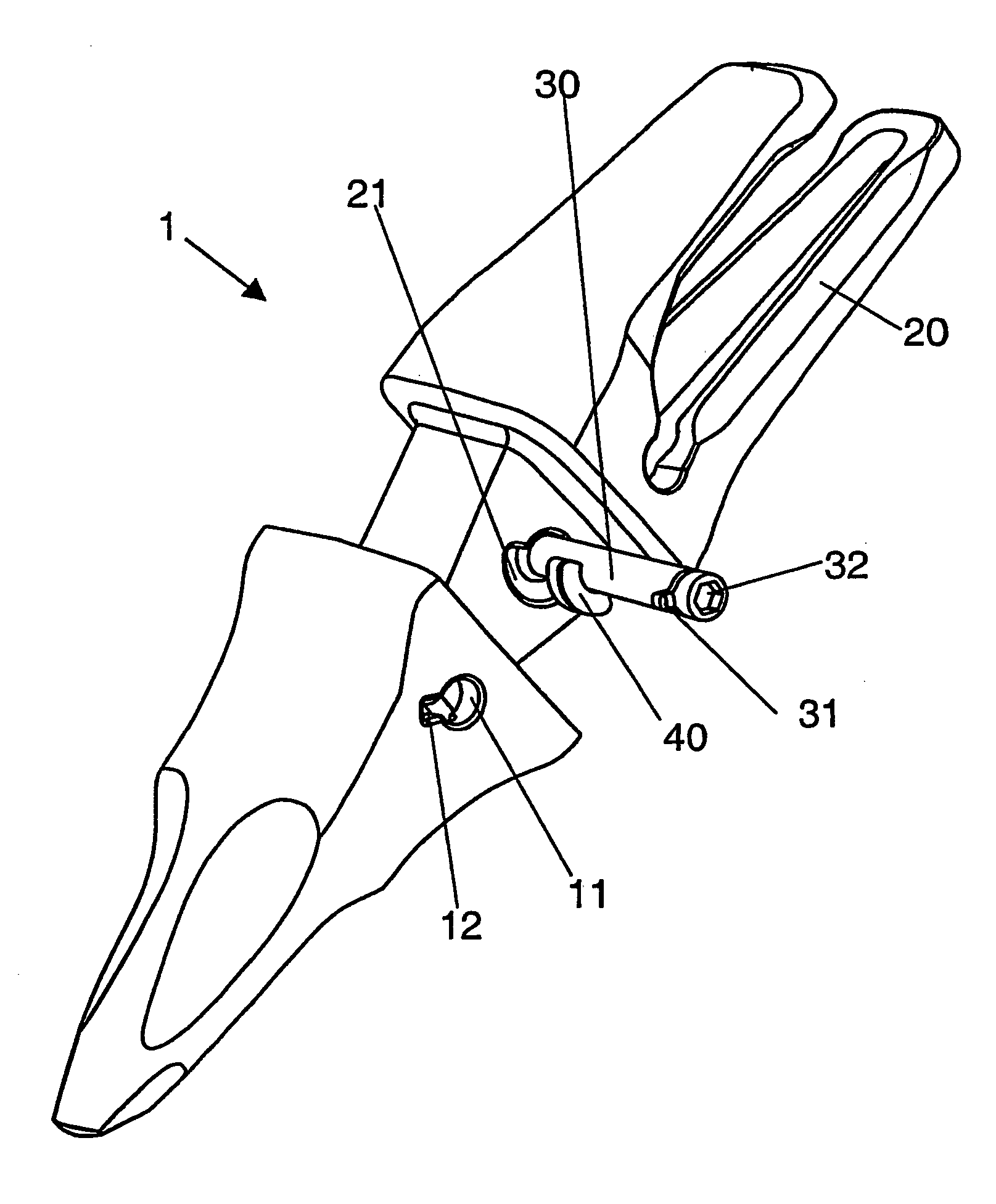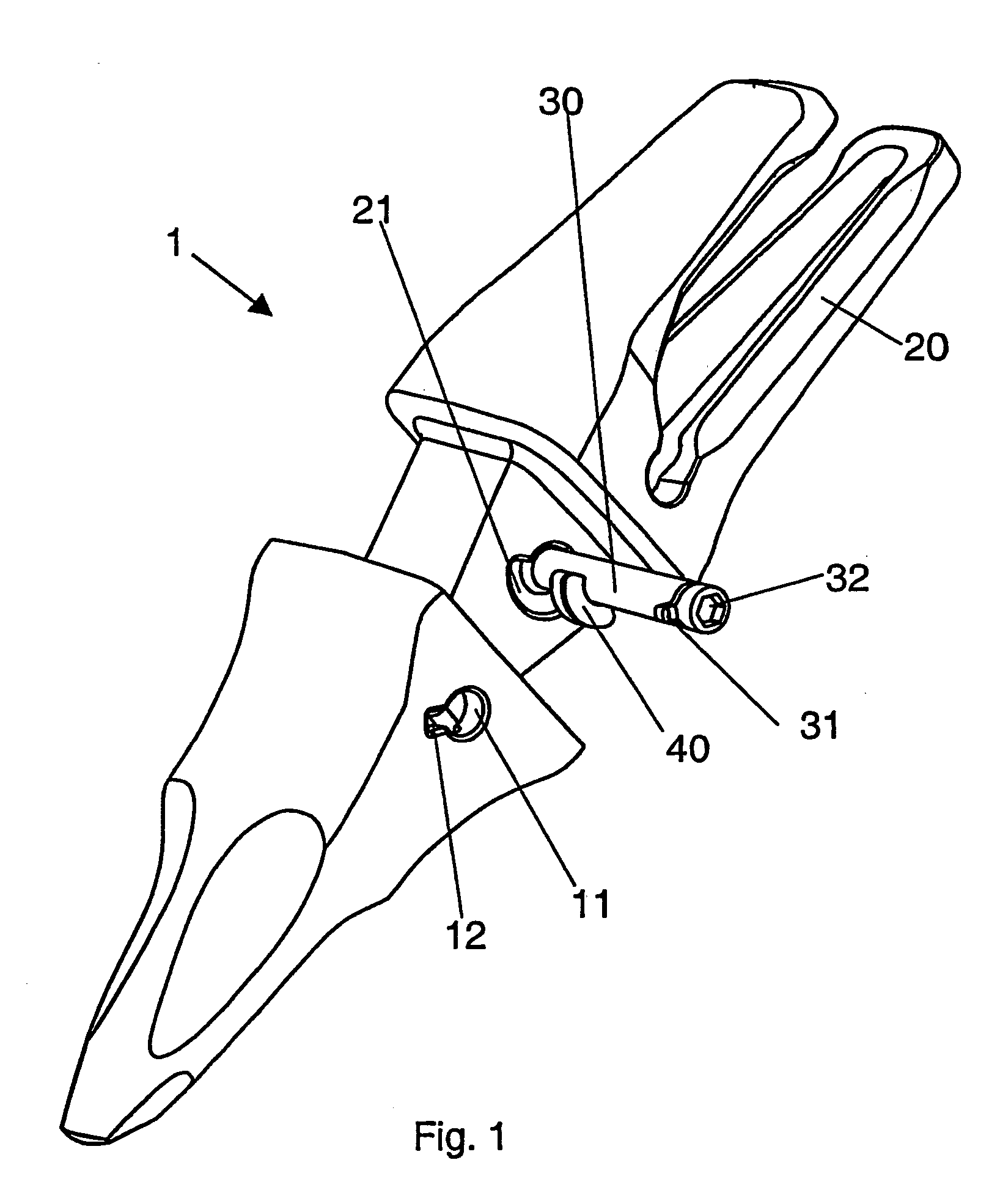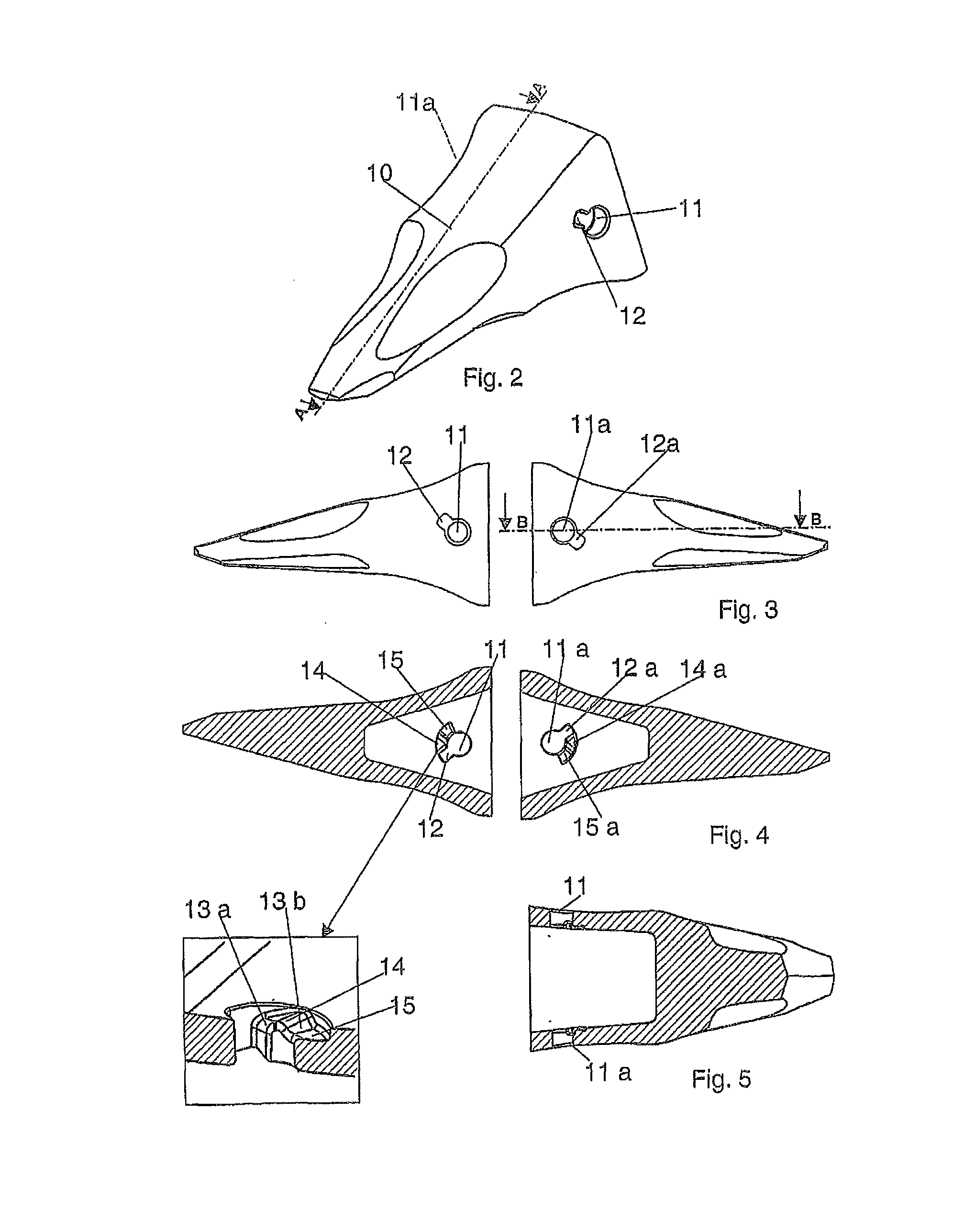Removable device for attaching two mechanical parts
a technology of mechanical parts and removable devices, which is applied in the direction of rod connections, couplings, drags, etc., can solve the problems of pins and teeth being lost, pins and teeth being subjected to wear and breakage, and pins have the tendency to be displaced against the pushing force of the retainer device, so as to simplify the assembly and removal of teeth
- Summary
- Abstract
- Description
- Claims
- Application Information
AI Technical Summary
Benefits of technology
Problems solved by technology
Method used
Image
Examples
Embodiment Construction
[0009]In order to overcome the drawbacks mentioned and to simplify the assembly and removal of a tooth in a tooth bar, and more generally of two mechanical parts, one female and the other male, from one another, the attachment device according to the present invention is characterized by the fact that it further comprises at least two inclined planes, the general shape of which is that of a projection oriented in the axial direction of the pin, such that when the pin is rotated, the retainer member runs along said inclined planes and the pin moves between two positions, the pin lock position and the unlock or introduction position, against the force axial to the pin exerted by said tension member. Said retainer member has four, two-by-two parallel faces, the two upper and lower faces being the ones which allow exerting the pressure on the tension member as well as facilitating the sliding of the retainer member, and therefore the rotation of the pin, in order to reach the lock posit...
PUM
| Property | Measurement | Unit |
|---|---|---|
| resilient tension | aaaaa | aaaaa |
| tension | aaaaa | aaaaa |
| shape | aaaaa | aaaaa |
Abstract
Description
Claims
Application Information
 Login to View More
Login to View More - R&D
- Intellectual Property
- Life Sciences
- Materials
- Tech Scout
- Unparalleled Data Quality
- Higher Quality Content
- 60% Fewer Hallucinations
Browse by: Latest US Patents, China's latest patents, Technical Efficacy Thesaurus, Application Domain, Technology Topic, Popular Technical Reports.
© 2025 PatSnap. All rights reserved.Legal|Privacy policy|Modern Slavery Act Transparency Statement|Sitemap|About US| Contact US: help@patsnap.com



